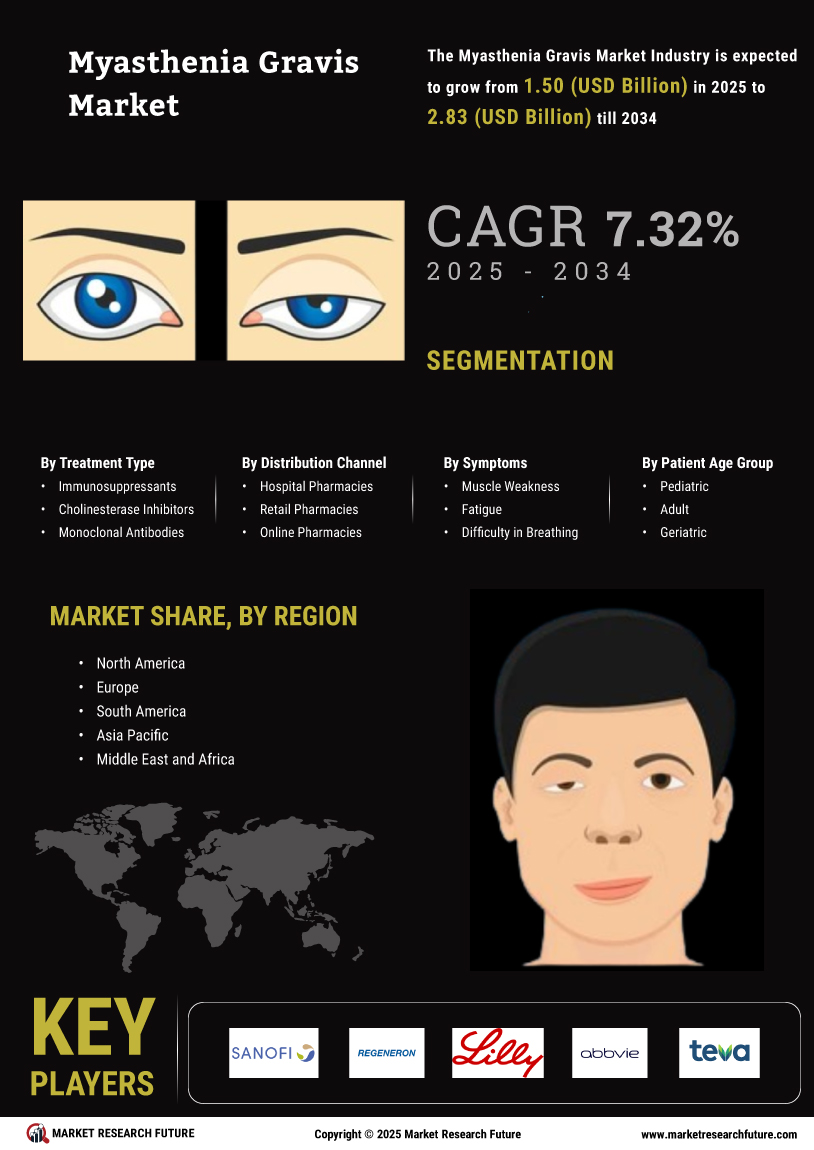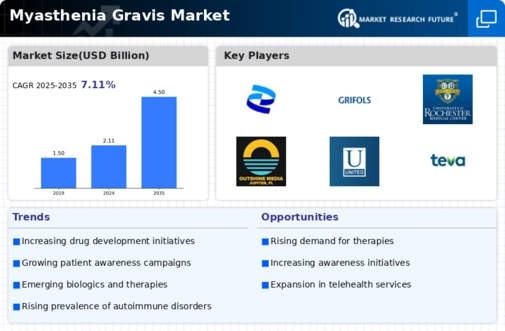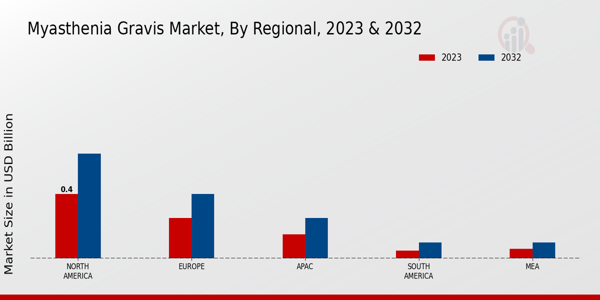The Myasthenia Gravis Market has been witnessing significant developments driven by the increasing prevalence of the disease, alongside rising awareness about treatment options and ongoing research initiatives. Myasthenia gravis is a chronic autoimmune neuromuscular disorder that results in varying degrees of skeletal muscle weakness, creating a robust demand for effective therapies. The competitive landscape in this market reveals a mix of established pharmaceutical companies and emerging biotech firms, each striving to innovate in their offerings to meet the diverse needs of patients.
The competition encourages investments in research and development, leading to the introduction of novel therapeutic agents and treatment protocols, which further enrich the treatment landscape and provide patients with better outcomes.Pfizer has established a notable presence in the Myasthenia Gravis Market through its comprehensive approach in addressing the needs of patients suffering from this condition. The company's strength lies in its well-diversified portfolio of neuromuscular disorder therapies, which enhances its ability to penetrate this market.
Pfizer has engaged in strategic partnerships and collaborations aimed at advancing research and improving patient access to therapies. Furthermore, its strong commitment to clinical trials and post-market studies positions it as a trusted entity in the field, ensuring that the therapeutic options offered are both safe and effective. As Pfizer continues to develop and refine its product offerings, it strengthens its foothold in the competitive landscape of the Myasthenia Gravis Market, leveraging its robust global distribution channels and marketing expertise to reach a wide array of healthcare providers and patients.
Merck and Co has also made significant strides in the Myasthenia Gravis Market, showcasing its commitment through a range of approved therapeutic options and ongoing research endeavors. Merck is recognized for its innovative approaches to treatment, particularly focusing on the development of monoclonal antibodies and immunotherapies that address the underlying mechanisms of myasthenia gravis. The company’s active pursuit of mergers and acquisitions in the pharmaceutical sector has further bolstered its capabilities, allowing it to expand its research pipeline and enhance its product offerings.
Notably, Merck's emphasis on patient-centric solutions and community engagement has solidified its market presence, establishing strong relationships with healthcare providers and advocacy groups. The combination of Merck's high-quality products and its strategic initiatives effectively positions the company as a key player in the Myasthenia Gravis Market, providing hope to patients and families affected by this challenging condition.
























Leave a Comment